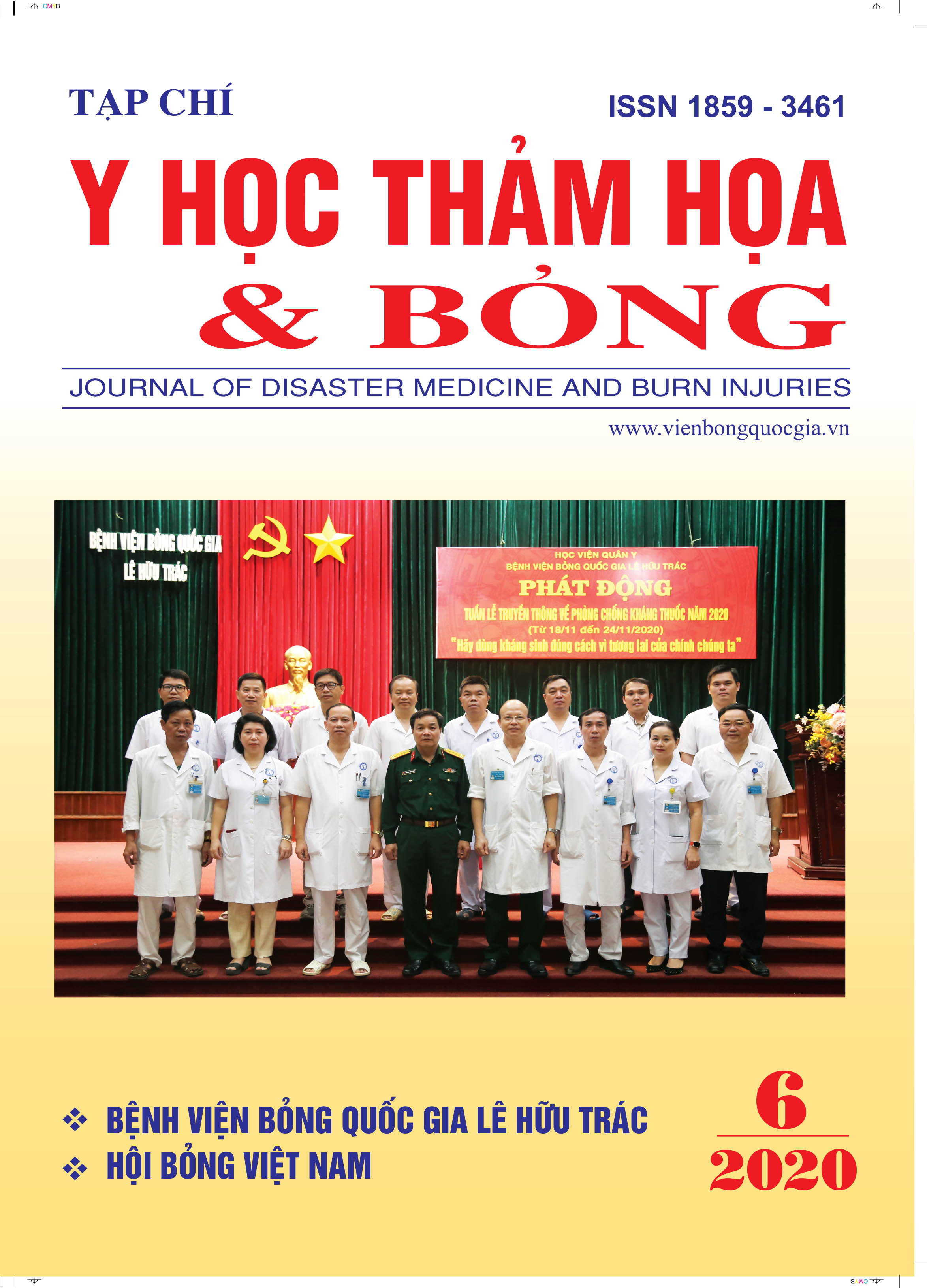Evaluating the Changement of hydroxyproline (Hyp) in chronic wound tissue after treatment with platelet-rich plasma
Nội dung chính của bài viết
Tóm tắt
Background and aims: Proline hydroxylation is essential for collagen synthesis in wound healing. Therefore, hydroxyproline (Hyp quantification may be a suitable marker of wound healing in chronic wound tissue.
Material and method: This is a descriptive longitudinal study including 30 referral patients from Wound Healing Center, National Burn Hospital, from May 2019 to May 2020. Thirty patients with 33 chronic wounds were was injected subcutaneously inside and around the periphery of the chronic wound. 500mg of skin tissue from the chronic wound before and after PRP treatment were taken for the measurement of Hyp levels at the first and second of follow-up.
Results: Mean Hyp concentration in wound granulation tissue after 2 weeks of PRP treatment (3.75 ± 1.15pg/mg) was significantly higher than mean concentration in the skin before PRP treatment (2.43 ± 1.01pg/mg).
Conclusion: Our results showed that PRP therapy had a beneficial effect on wound healing of the chronic wound through the stimulation to increase Hyp.
Chi tiết bài viết
Từ khóa
Chronic wound, wound healing, hydroxyproline (Hyp)
Tài liệu tham khảo
2. Posnett, J.; Gottrup, F.; Lundgren, H.; Saal, G. The resource impact of wounds on health-care providers in Europe. J. Wound Care 2009, 18, 154-161.
3. Menke, N.B.; Ward, K.R.; Witten, T.M.; Bonchev, D.G.; Diegelmann, R.F. Impaired wound healing. Clin. Dermatol. 2007, 25, 19-25.
4. Koltuksuz U, Mutus HM, Kutlu R, et al. Effects of caffeic acid phenethyl ester and epidermal growth factor on the development of caustic esophageal stricture in rats.
5. Sakallioglu AE, Yagmurlu A, Dindar H, Hasirci N, Renda N, Deveci MS. Sustained local application of low-dose epidermal growth factor on steroid-inhibited colonic wound healing. J Pediatr Surg 39: 591-595, 2004.
6. Witte MB, Kiyama T, Barbul A. Nitric oxide enhances experimental wound healing in diabetes. Br J Surg 89: 1594-1601, 2002.
7. Shi HP, Most D, Efron DT, Witte MB, Barbul A. Supplemental L-arginine enhances wound healing in diabetic rats. Wound Repair Regen 11: 198-203, 2003.
8. Bakker K, Schaper NC. New developments in the treatment of diabetic foot ulcers. Ned Tijdschr Geneeskd 144 : 409-412, 2000.
9. Muller M, Trocme C, Lardy B, Morel F, Halimi S, Benhamou PY. Matrix metalloproteinases and diabetic foot ulcers: the ratio of MMP-1 to TIMP-1 is a predictor of wound healing. Diabet Med 25: 419-426, 2008.
10. Lobmann R, Zemlin C, Motzkau M, Reschke K, Lehnert H. Expression of matrix metalloproteinase and growth factors in diabetic foot wounds treated with a protease absorbent dressing. J Diabetes Complications 20:329-335, 2006.
11. Black E, Vibe-Petersen J, Jorgensen LN et al. Decrease of collagen deposition in wound repair in type 1 diabetes independent of glycemic control. Arch Surg 138: 34-40, 2003.
12. Lisa M, Coussens, Zena Werb. Inflammation and cancer. Nature 2002;420:860-867.


